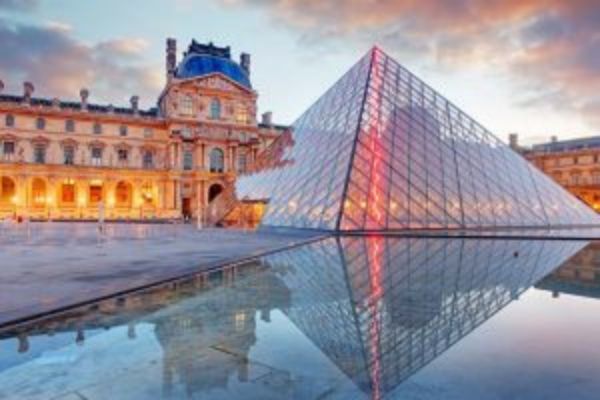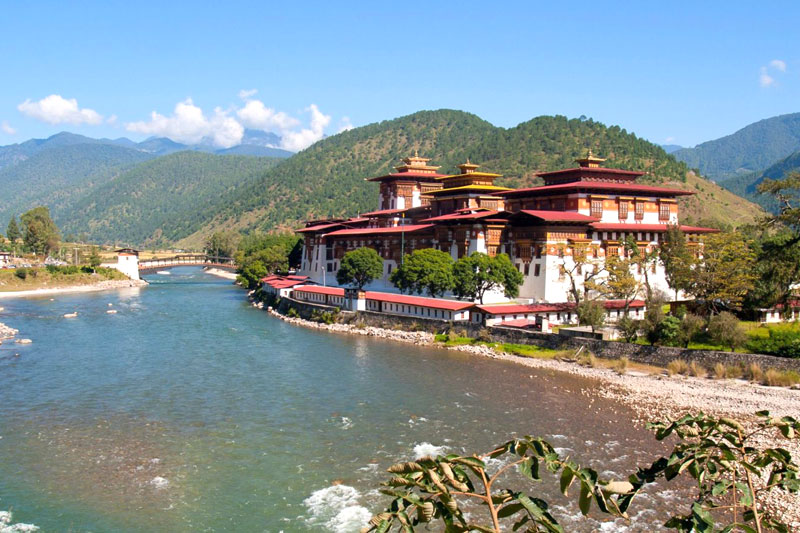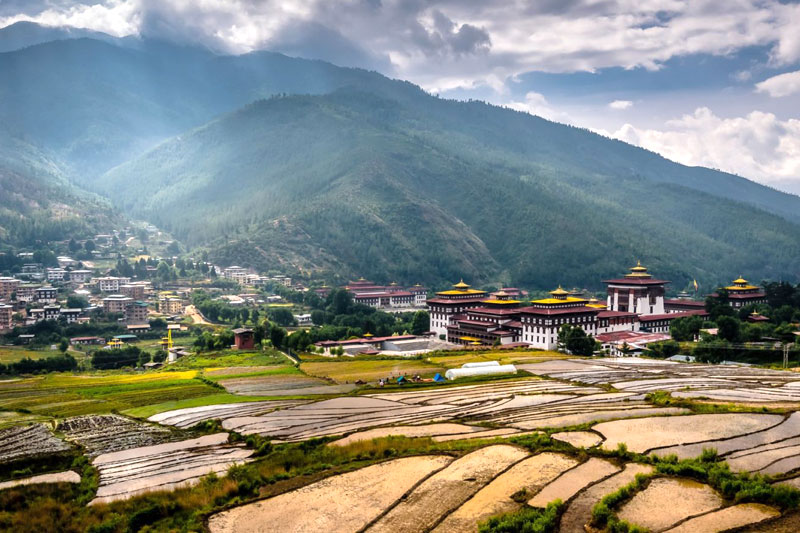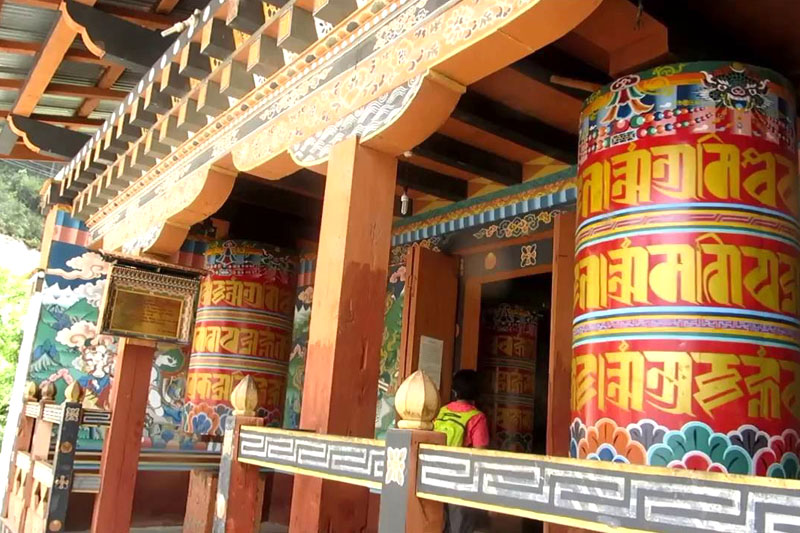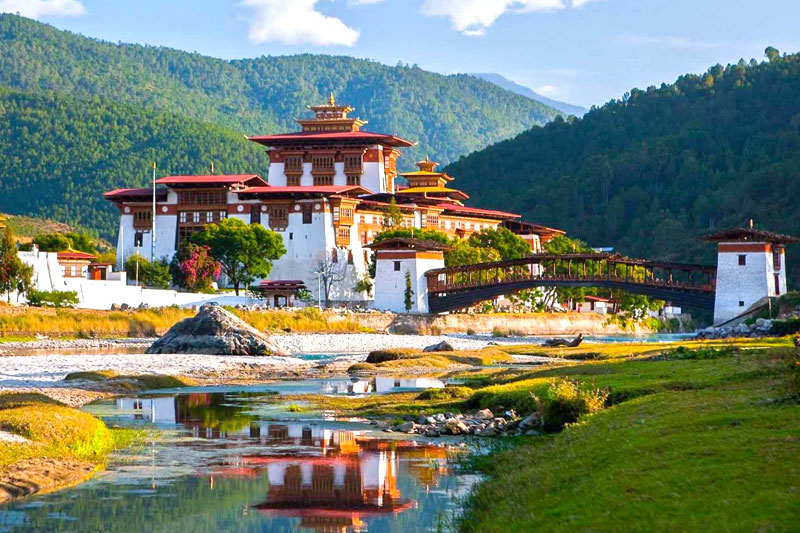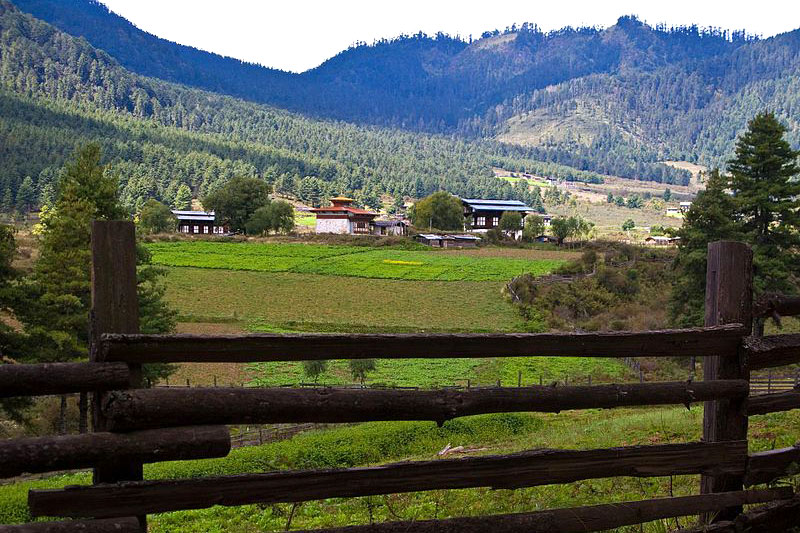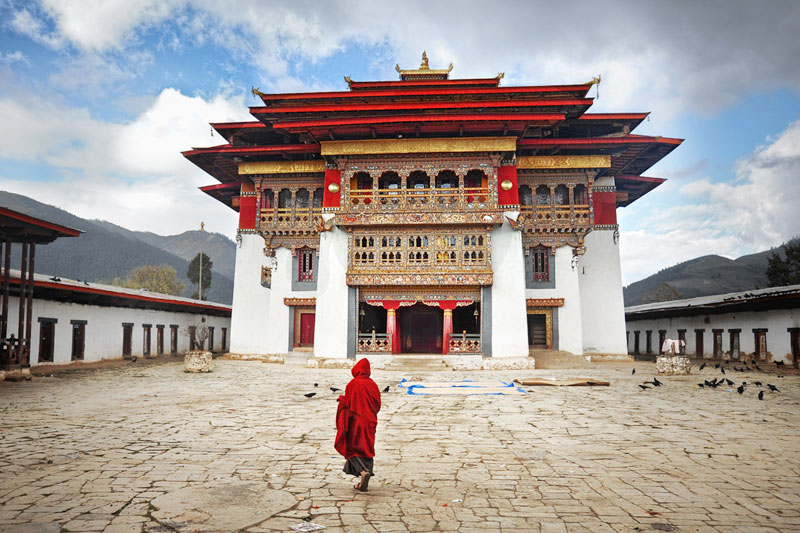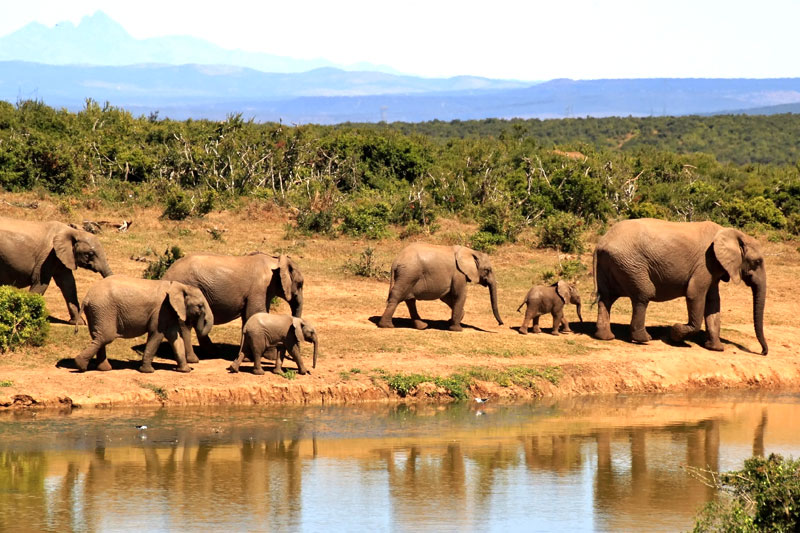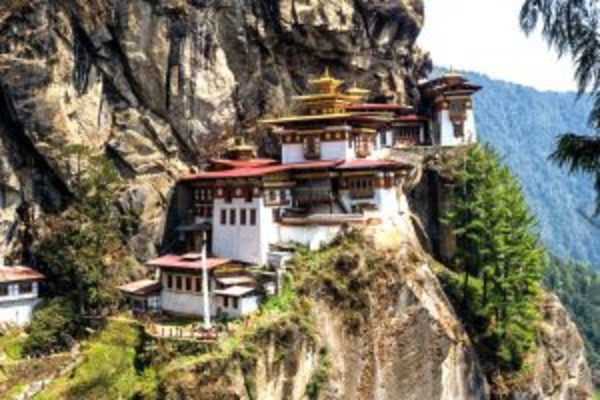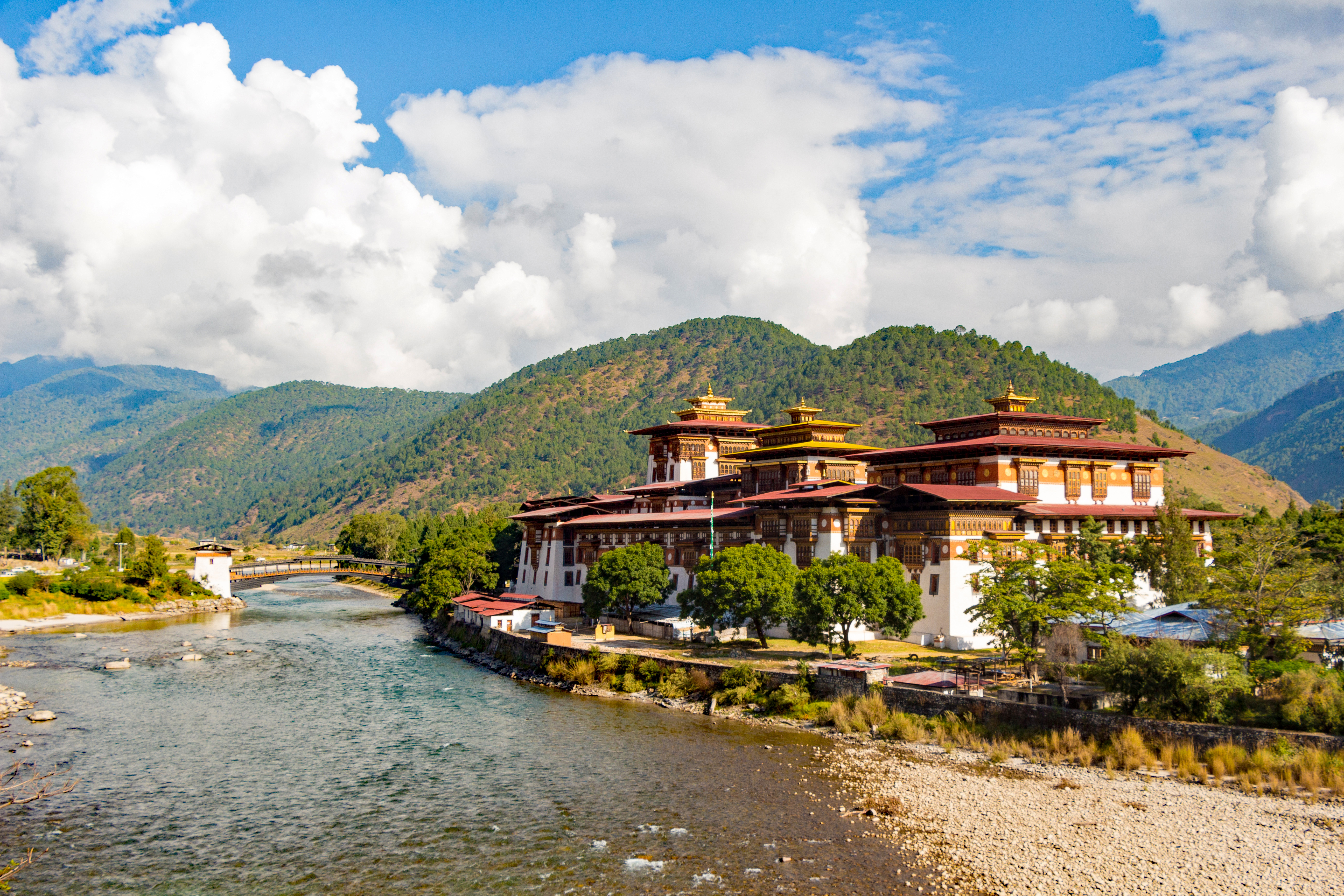Bhutan often revered as the "Land of the Thunder Dragon" or 'Druk Yul', is still regarded as one of the last "Shangri-La's" in the Himalayan region because of its remoteness, its spectacular mountain terrain, varied flora and fauna and its unique ancient Buddhist monasteries
This country of rolling hills and towering crags certainly exudes charm. The mountains are magnificent, the forest are dense, the people are delightful, the air is pure, the architecture inspiring, the religion exciting and the art superb. Like timeless images from the past, the traveller encounters the full glory of this ancient land through its strategic fortresses known as Dzong, numerous ancient temples, monasteries and stupas which dot the countryside, prayer flags which flutter along the high ridges, wild animals which abound in dense forests, foamy white waterfalls which are the ethereal showers, and the warm smile of its friendly people.
The tiny kingdom of Bhutan shares with Nepal the world's greatest concentration of mountains and living heritage of Buddhism. Flight to Paro can truly be described as a flight into fantasy. During the flight, a first-hand close up view of Mt. Everest, Mt. Kanchenjunga and other famous peaks of the Himalaya range become a reality.
The flight to Paro is one of the most spectacular in entire Himalayas. Whether flying along the Himalayan range from Kathmandu or over the foothills from Kolkata, the journey offers fascinating views and an exciting descent into the Kingdom. Bhutan’s first gift to you as you disembark from the aircraft will be cool, clean fresh mountain air. After immigration formalities and baggage collection, you will be met by our representative, and afterwards drive to Thimphu, the capital town of Bhutan with en-route stop at Chuzom, the confluence of Thimphu and Paro rivers. Three different style of stupas; Tibetan, Nepalese and Bhutanese adorn this confluence. Shortly before reaching Chuzom, you will see on your left Tschogang Lhakhang, “the temple of the excellent horse”. It is a private temple, built in 15th century, as the result of visitation from Balaha, the excellent horse, a manifestation of Chenrezig, the compassionate Buddha.
On arrival in Thimphu; Check-into the hotel. The capital town of Bhutan and the centre of Government, religion and commerce, Thimphu is a unique city with unusual mixture of modern development alongside ancient traditions. With the population of about 90,000 it is perhaps still the world’s only capital city without a traffic light.
Evening an exploratory walk around Thimphu Main Street and market area. Also, visit the Local Crafts Bazaar, to browse through example of Bhutan's fine traditional arts. Here you can buy hand-woven textiles, Thangkha paintings, masks, ceramics, slate and wood carvings, jewellery, interesting items made from local materials.
Overnight at the hotel in Thimphu.
After breakfast, sightseeing in Thimphu valley including visit to the following: The National Library, housing an extensive collection of priceless Buddhist manuscripts; the Institute for Zorig Chusum (commonly known as the Painting School) where students undergo a 6-year training course in Bhutan’s 13 traditional arts and crafts. Later visit Textile Museum, which provides insight into Bhutan’s one of the most distinct art form. Also, visit Simply Bhutan, a living museum and studio encapsulating the cultural heritage of the Bhutanese people.
After lunch, take a short drive (15 km) to Pangri Zampa, 16th century one of the oldest monasteries in Bhutan located just north of Thimphu. Here is a monastic school where Buddhist student’s monks learn Lamaism and astrology based on Buddhist philosophy.
Afterwards visit to Buddha Point (Kuensel Phodrang). Located at a short drive from Thimphu city centre, visitors can get a good overview of the Thimphu valley from the Buddha point (KuenselPhodrang). You can pay your obeisance and offer prayers to the Buddha, the largest statue in the country and then walk around and take a glimpse of the valley.
King's Memorial Chorten continuously circumambulated by people, murmuring mantras and spinning their prayer wheels. Construction of this landmark was the idea of Bhutan’s third king, His Majesty Jigme Dorji Wangchuk (“the father of modern Bhutan”) who has wished to erect monument to world peace and prosperity. Completed in 1974 after his untimely death, it serves both as a memorial to the Late King and as a monument to peace.
Later visit to Trashichhoedzong: This impressive fortress/monastery houses Secretariat building, the throne room of His Majesty, the King and various government offices. It is also the summer residence of Chief Abbot and central monk body.
Overnight at the hotel in Thimphu
After breakfast, check-out from the hotel & drive Gangtey (Phobjikha) enroute visiting Dochula Pass (Altitude 3080m). In Bhutan, the passes are marked by a large Bhutanese Chorten and prayer flag. Dochula pass offers the most spectacular view over the high peaks of the eastern Himalayas on a clear day. The journey continues over the mountain pass where on a clear day, the towering Himalayan peaks are clearly visible. The highway follows the scenic Dang Chhu before climbing through forests of bamboo and oak.
On arrival at Gangtey; Check-into the hotel. The approach to Phobjikha valley is through a forest of oak and rhododendron. Phobjikha is one of the few glacial valleys in Bhutan and chosen home of black necked cranes, which migrate from the central Asiatic Plateau to escape its harsh winters.
Evening take a stroll around fascinating Gangtey Village.
Overnight at the hotel in Gangtey
After breakfast, proceed to visit Gangtey Goempa, perched on a small hill that rises from the valley floor, the Gangtey Monastery is the only Nyingmapa monastery on the western side of the Black Mountain’s and also the biggest Nyingmapa monastery in Bhutan. The Monastery is surrounded by a large village inhabited mainly by the families of the 140 Gomchens who take care of the Monastery.
Later explore fascinating Phobjikha valley. A few kilometers beyond the Gangtey Monastery, on the valley floor lies the village of Phobjikha. This quite, remote valley is the winter home of black necked cranes, which migrate from the arid plains of Tibet in the north, to pass the winter months in a milder climate. Phobjikha, at an altitude of 2900 m, falls under the district of Wangdue Phodrang and lies on the periphery of the Black Mountain National Park. The valley boasts two beautiful meandering rivers, Nakay Chhu (Chhu Naap-black water) and Gay Chhu (Chhu Karp-white water). According to a local legend, the two rivers actually represent a snake and a boar. The two animals once raced each other with an agreement that if the snake (Nakay Chhu) won, Phobjikha valley would be able to grow rice, but if the boar won, then rice could never be cultivated in the area. The snake lost since it had to meander all the way during its journey. Rice cannot be cultivated in the valley even today.
Also visit Black Necked Crane Information Centre: Situated on the edge of the forest and wetland along the main road of Phobjikha valley, the black-necked crane information Centre has an observation room equipped with high power telescope and spotting scopes for catching the best view of the cranes. The centre also offers display information that outline the natural and cultural history of the area. There is a small gift shop, which sells handicrafts produced by the local people.
Overnight at the hotel in Gangtey
After breakfast, check-out from the hotel and drive to Punakha, the old capital town of Bhutan.
On arrival in Punakha; Check-into the hotel. Later visit Punakha Dzong, a massive structure built at the junction of two rivers. It was the capital of Bhutan until 1955, and still serves as the winter residence of the monk body.
Further visit to Chimi Lhakhang (from hotel it is about 15 mins drive till motor able road and then walk starts through paddy fields and villages. This is total about 1.1/2 hour walk, including both way). The Chimi Lhakhang, situated on a hillock in the centre of the valley, also known as the temple of fertility. It is widely believed that couples who do not have children and wanting one, if they pray at this temple, they are usually blessed with a child very soon. The trail leads across rice fields to the tiny settlement of Pana, meaning ‘field’.
Overnight at the hotel in Punakha
After breakfast, check-out from the hotel and drive to Wangdue Phodrang to visit Dzong and local market. The district of Wangdue Phodrang is also famous for its bamboo products, slate and stone carvings.
Continue drive to Paro along scenic highway, enroute visit SimtokhaDzong, the oldest fortress of the country built in 1627 which now houses the School for Buddhist studies.
On arrival in Paro, check into the hotel.
After lunch, proceed to visit Ta Dzong, originally built as Watchtower, which now houses National Museum. The extensive collection includes antique Thangkha paintings, textiles, weapons &armour, household objects and a rich assortment of natural and historic artifacts.
Ta Dzong visit immediately followed by a short walk down the trail to visit RinpungDzong (ParoDzong), meaning (“fortress of the heap of jewels”), which has a long and fascinating history. Along the wooden galleries lining the inner courtyard are fine wall paintings illustrating Buddhist lore such as four friends, the old man of long life, the wheel of life, scenes from the life of Milarepa, Mount. Sumeru and other cosmic Mandala.
Overnight at the hotel in Paro.
After breakfast excursion to Taktshang Monastery or Tiger’s Nest (approx. 5 hours walk): It is one of the most famous of Bhutan’s monasteries, perched on the side of a cliff 900m above the Paro valley floor. It is said that Guru Rinpoche arrived here on the back of a tigress and meditated at this monastery and hence it is called ‘Tiger’s Nest’. This site has been recognised as a most sacred place and visited by ShabdrungNgawangNamgyal in 1646 and now visited by all Bhutanese at least once in their lifetime. On 19 April, 1998, a fire severely damaged the main structure of building but now this Bhutanese jewel has been restored to its original splendour.
Afternoon drive to DrukgyelDzong, a ruined fortress where Bhutanese warriors fought Tibetan invaders centuries ago. The snowy dome of sacred Chomolhari, "mountain of goddess'' can be seen in all her glory from the approach road to the Dzong.
Evening, visit the 7th century KyichuLhakhang, one of the 108 temples built in the Himalayas by Tibetan King, Songtsen Gampo. The building of this temple marks the introduction of Buddhism in Bhutan.
Overnight at the hotel in Paro.
After early breakfast at the hotel, drive to the airport for flight to your onward destination. Our representative will help you with exit formalities and then bid you farewell.
Inclusion
Accommodation in standard hotels, approved by Tourism Council of Bhutan
All meals
All transfers and sightseeing as per the itinerary
English speaking accompanying guide
Government royalty and taxes
Entrances
Bhutan Visa
Exclusion
Expenses of personal nature (like tipping, laundry, Telephone/fax calls, camera/video fees etc.)
Insurance of any kind / medical expenses
Beverages (alcoholic / non – alcoholic)
Airfares and Airport Taxes
Sleeping Bags while on Trek
Extra supplement costs
Note
Child cost is available on request
Vehicle Used:
01 – 02 Pax: NAC Hyundai Tucson / Santa Fe
CLOSING DAYS OF SOME OF MONUMENTS MENTIONED IN ITINERARY:
Ta Dzong – Paro (national museum) : closed on Government Holidays
National Library – Thimphu : closed on Sat, Sun & on Government Holidays
Textile Museum – Thimphu: Closed on Government Holidays & on Sunday. On Sat open from 9.00 a.m to 4 p.m
Institute of Zorig Chusum (Arts & Crafts School) - Thimphu: Closed on Sun & Government Holidays. On Sat open from 10 a.m to 12 o’clock. Also closed in winter (Dec-early Feb summer - June- July).
Simply Bhutan – Thimphu: Closed on Sun & on Government Holidays
Folk Heritage Museum – Thimphu: Closed on Sunday & on government holidays
Choki Traditional Art School – Thimphu: Closed on Government Holidays & on Sunday. On Sat open from 9.00 a.m to 12.30 p.m( Winter Dec- early Feb and Summer June- july)
Wangdue Phodrang Dzong, Punakha: Closed due to maintenance
Hotels envisaged (3*+)
PARO:
-The Village Lodge / Tashi Phuntshok Hotel / Tashi Namgay Resort / Tenzinling Resort / Tiger Nest Resort / Hotel Gangtey Palace / Hotel Olathang / Dewachen Resort / Kyichu Resort / Hotel Drukchen / Khangkhu Resort / Namsey Chholing Resort / Pelri Cottages / Hotel Jigmeling / Hotel Silverpine / Janka Resort / Nivvana Lodge & Homestay / Rema Resort / Mandala Resort
THIMPHU:
-Hotel Jumolhari / Hotel Kisa / Hotel Migmar / Hotel Galingkha / Hotel Phuntsho Pelri / Hotel Pedling / Hotel Dorji Elements / Hotel Gakyil / Hotel River view / Peaceful Resort / Bhutan Suites / Hotel Shantideva / Yeedzin Guest House / Ro-Chog Pel Hotel / Hotel Ser-Nya / Jambayang Resort / Hotel Norbuling / Namseling Hotel / Hotel Wangchuk / Thimphu Tower
PUNAKHA:
-Meri Puensum Resort / Hotel Drubchhu / Damchen Resort / Hotel Zangtho Pelri / Hotel Vara / Puns Tshangchhu Cottages
GANGTEY:
-Hotel Dewachen / Gakling Lodge / Theckchenphodrang Lodge / Yue Lo Ki Lodge / Hotel Ugyencholing / Gangtey Guest House / Wangchuk Lodge
